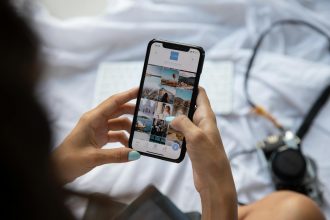halloween science experiments
Halloween Science Experiments: Spooky Fun for Kids!
Halloween Science Experiments: Spooky Fun for Kids!
Unlock Spooky Science Fun This Halloween!
Are you looking for ways to make this Halloween both thrilling and educational for your little ones? This season is the perfect time to blend the magic of spooky tales with the wonders of scientific exploration. Get ready to dive into a world of exciting Halloween science experiments that will captivate young minds and create lasting memories.
Why Halloween Science Experiments are a Treat
Halloween is a fantastic opportunity to spark curiosity and introduce fundamental scientific concepts in an engaging and memorable way. These hands-on activities not only entertain but also foster critical thinking and problem-solving skills. Plus, who can resist the allure of bubbling concoctions and ghostly apparitions?
Top 5 Halloween Science Experiments to Try
Let’s get started with some incredibly fun and easy-to-do experiments that are sure to be a hit:
- Ghostly Goo: Make Slime!
- Witch’s Brew: The Classic Baking Soda Volcano
- Floating Ghosts: Density and Buoyancy Fun
- Monster Eyeballs: Exploring Polymers
- Spooky Lava Lamps: Chemical Reactions in Action
Dive Deeper: The Science Behind the Spookiness
Every Halloween science experiment offers a window into fascinating scientific principles. Let’s explore a few:
The Magic of Non-Newtonian Fluids: Slime Making
When you make slime, you’re creating a non-Newtonian fluid. This means its viscosity changes depending on the stress applied. It can flow like a liquid but also hold its shape like a solid under pressure. Borax, glue, and water react to form these unique properties, making for hours of gooey fun.
Chemical Reactions: The Witch’s Brew Volcano
The classic baking soda and vinegar reaction is a staple for a reason! Baking soda (sodium bicarbonate) is a base, and vinegar (acetic acid) is an acid. When they mix, they create a chemical reaction that produces carbon dioxide gas. This gas rapidly expands, causing the “eruption” that mimics a bubbling cauldron.
Density Differences: Floating Ghosts
To make ghosts appear to float, we can utilize the concept of density. By carefully layering liquids of different densities (like oil and water), you can suspend objects. The ghostly apparition might be made from a material less dense than the liquid it’s submerged in, allowing it to hover.
Tips for a Successful and Safe Halloween Science Session
To ensure your Halloween science experiments are a roaring success, keep these tips in mind:
- Gather all your materials beforehand to avoid last-minute rushes.
- Protect your workspace with old newspapers or a plastic tablecloth.
- Always supervise young children during experiments.
- Encourage questions and discussions about what’s happening.
- Embrace the mess – it’s part of the fun!
Further Exploration: Resources for Spooky Science
Want to explore even more fascinating science concepts? Check out these excellent resources:
Conclusion: A Hauntingly Good Time with Science
This Halloween, go beyond the candy and costumes. Engage your children’s minds with thrilling and educational Halloween science experiments. From bubbling brews to floating specters, these activities offer a unique way to learn and celebrate. So, gather your ingredients, unleash your inner scientist, and have a spooktacularly educational time!
Ready to get started? Share your favorite Halloween science experiments in the comments below!
halloween science experiments, spooky science, kids science activities, halloween fun, science for kids
image search value for featured image: “kids doing halloween science experiments”



